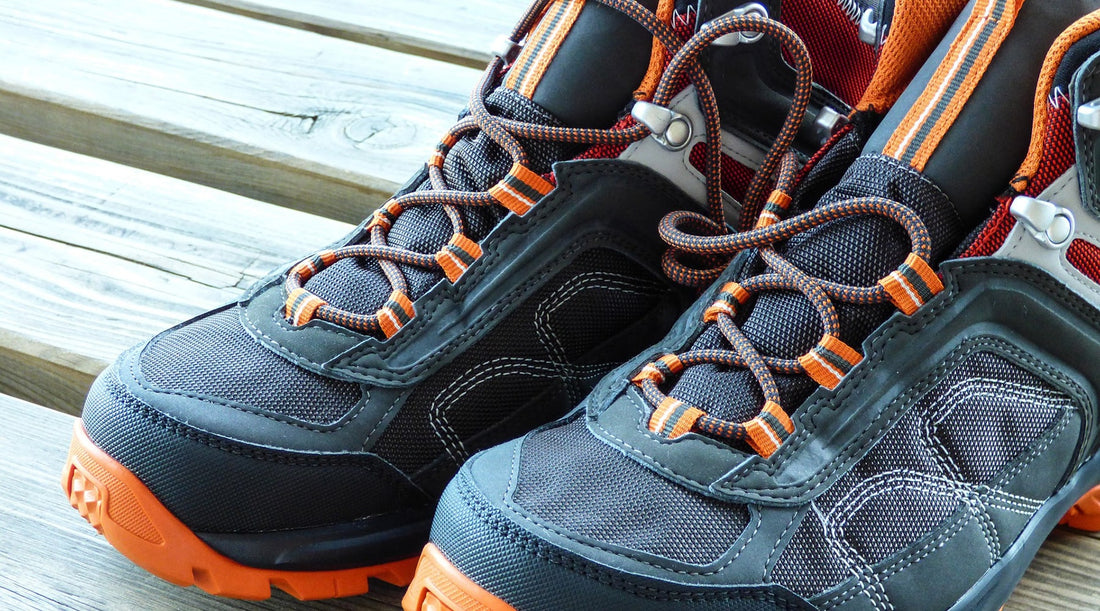Selecting the right footwear is, perhaps, the most critical decision for hikers and backpackers, influencing comfort, performance, and overall experience. Trail runners and hiking boots are the two most common choices, each with its set of advantages and considerations.
Below, we'll delve into the differences between trail runners and hiking boots, in an effort to help you make the best decision based on your specific needs and preferences.
Trail Runners:
1. Lightweight and Agile:
- Swift Movement: Trail runners are renowned for their lightweight design, offering agile and nimble movement. This is particularly advantageous for those who prefer a faster pace and want to cover more ground.
2. Breathability:
- Cool Comfort: Trail runners often feature breathable materials that keep your feet cool, making them an excellent choice for warmer climates and summer hikes.
3. Flexibility:
- Natural Movement: With a more flexible sole, trail runners allow for a more natural foot movement, providing a closer-to-the-ground feel. This flexibility is beneficial for navigating uneven terrain.
4. Quick Drying:
- Adaptable in Wet Conditions: Trail runners, with their lightweight and often mesh construction, tend to dry quickly, making them suitable for wet conditions and stream crossings.
5. Versatility:
- Multi-Sport Potential: Beyond hiking, trail runners are versatile enough for trail running, fastpacking, and even some light backpacking. They are suitable for a range of outdoor activities.
6. Minimalist Design:
- Less Bulk: Trail runners typically have a minimalist design with less bulk, offering a closer fit around the foot. Some hikers appreciate the feeling of being more connected to the trail.

Hiking Boots:
1. Ankle Support:
- Stability on Uneven Terrain: Hiking boots provide substantial ankle support, reducing the risk of twisting or spraining on uneven terrain. This is particularly beneficial when carrying a heavy backpack.
2. Durability:
- Built to Last: Hiking boots are constructed with durability in mind, often featuring robust materials and reinforced toe caps. They can withstand rough terrain, rocks, and various trail challenges.
3. Protection:
- Shielding from Elements: The higher cut of hiking boots not only supports the ankles but also provides additional protection against debris, mud, and potential encounters with thorny vegetation.
4. Waterproof Options:
- Weather Resilience: Many hiking boots come in waterproof or water-resistant options, providing better protection against rain, snow, and wet conditions.
5. Load Bearing:
- Heavy Backpacks:* Hiking boots are well-suited for carrying heavy loads, distributing the weight more evenly and reducing the strain on your feet and lower legs during extended hikes or backpacking trips.
6. Traction:
- Grip on Challenging Terrain: Hiking boots often feature robust outsoles with deep lugs, offering superior traction on challenging surfaces like rocks, mud, or steep inclines.
Choosing the Right Footwear:
1. Trail Runners for Light and Fast Adventures:
- Ideal for: Day hikes, trail running, ultralight backpacking, warm weather.
2. Hiking Boots for Durability and Support:
- Ideal for: Extended backpacking trips, rough and rocky terrain, carrying heavy loads, cold or wet conditions.
Ultimately, the choice between trail runners and hiking boots depends on your preferred hiking style, the terrain you'll be traversing, and the conditions you anticipate. Some hikers even opt for a hybrid approach, using trail runners for lighter excursions and hiking boots for more challenging endeavors.
Regardless of your choice, ensuring a proper fit and considering the specific demands of your outdoor adventures are key to a comfortable and enjoyable hike.

